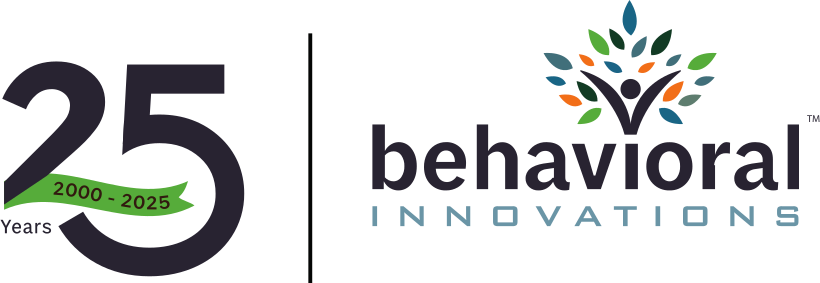
Still, many providers rely on outdated systems that drain time and resources — and 85% of healthcare organizations acknowledge the need to revamp their payment experiences for that reason.
Reliance on outdated software and manual processes poses an even greater challenge in elective healthcare and dental practices that manage high-value procedures, recurring treatment plans and multiple payment touch points. Without the right tools, staff must manually reconcile payments, send invoices and track transactions across disconnected systems — delaying revenue and straining administrative staff.
The good news? Today’s payments landscape gives healthcare practices greater freedom to choose the tools and payment providers that best fit their needs, helping them streamline financial operations and deliver a better experience for patients and staff.
The hidden costs of outdated payment systems
Payment processing isn’t always the first thing providers think of when making operational improvements. But outdated practice management software can create serious inefficiencies behind the scenes.
Most platforms limit providers to a single payment processor that lacks complete integration with back-office workflows. While these setups can handle basic transactions, they can’t support the full payment lifecycle, from payment collection to reconciliation and reporting.
Outdated solutions also lack key integrations like compliant surcharging, forcing practices to run surcharges manually at the terminal. The inability to streamline surcharging adds unnecessary friction and contributes to rising payment processing costs, especially for practices handling big-ticket elective procedures.
Compounding the problem, healthcare practices have complex operational needs, whether it’s handling various types of payment arrangements, managing repeat visits or maintaining consistent records across multiple locations. Without fully integrated tools, manual tasks across disjointed systems eat up valuable time and resources.
It’s no wonder that 84% of healthcare organizations report financial losses tied to outdated accounts receivable processes — underscoring just how much time and revenue are lost to inefficiency.
But the impact of outdated payment systems doesn’t stop at the front desk. When convenient payment options aren’t available, whether it’s text-to-pay or flexible billing, patients are more likely to delay payments or look elsewhere for care.
Because every practice operates differently, one-size-fits-all payment systems can introduce more friction than they solve. Whether your goal is to reduce overhead, improve cash flow or unify multi-location operations, the first step is identifying where your current payment workflows fall short.
Evaluating your payment system needs: Key considerations
Instead of working around the limitations of an outdated payment system, it’s time to take control and optimize your financial operations.
The right solution reduces manual errors and administrative workloads, optimizes your revenue cycle and enables you to deliver a more convenient patient experience. Look for features like compliant surcharging and text-to-pay that save time and streamline workflows.
Ask yourself these three questions to determine whether your payment system is working for you — or holding you back — and what your practice needs moving forward.
Are you aware of the different options on the market? When was the last time you evaluated your payment setup? More likely than not, your practice could benefit from an assessment that looks at provider flexibility, integration capabilities and the availability of patient-friendly payment features. Providers often assume their practice management system’s built-in payment processor is their only option, but that’s far from the truth. Modern solutions give practices the freedom to choose an alternative payment processor without sacrificing the convenience of integrated workflows. While sticking with default payment tools might seem convenient, it often means settling for limitations that hold you back. By exploring the market, you can find solutions better aligned with your workflows and business goals — and ensure you have the flexibility to choose the best fit for your practice.
What challenges are driving the need to upgrade payments? Understanding the specific challenges your practice faces is crucial to finding the right system. More often than not, these challenges are closely tied to practice size and business model.
- Small practices: High processing costs can strain already tight margins for smaller practices. While surcharging can help offset those costs, legacy practice management software can’t often integrate with compliant surcharging capabilities.
- High-volume practices: Practices with more patients are more likely to experience bottlenecks due to manual back-office processes. Legacy software often lacks the automation and integration needed to streamline financial workflows, forcing administrative staff to spend hours each week reconciling transactions and patching together disconnected tools.
- Concierge care practices: More providers are moving away from insurance-dependent models toward subscription-based care. If you run a concierge practice, you likely rely on consistent, predictable revenue — but managing those payments manually is time-consuming and error-prone.
- Multi-location practices: If you operate within a more complex business model, such as a multi-location practice, your pain points and priorities probably look different. Without a centralized payment system, it’s hard to maintain visibility across locations, standardize reporting and provide a consistent experience for patients and staff.
What payment functionality does your practice require? Once you’ve identified what’s holding your current financial operations back, you can determine what you need from a solution.
- Small practices: Flexibility and control are key for cost-conscious small practices. You may prioritize choosing a cost-effective payment processor and access to compliant surcharging to offset processing fees. Surcharging is a smart strategy for protecting your margins, particularly in elective healthcare specialties like cosmetic dermatology, where many procedures carry a high price tag.
- High-volume practices: Operational efficiency becomes vital when you’re processing high payment volumes. Features like card-on-file storage, automated invoicing and integration with accounting systems can reduce manual workloads, improve cash flow and help you regain control over financial operations.
- Concierge care practices: Predictable, recurring revenue is the foundation of concierge care models. Card-on-file capabilities and recurring payment options simplify collection for patients and ensure revenue consistency without added administrative effort. These tools not only improve cash flow, they help practices build a more connected payment experience for staff and patients alike.
- Multi-location practices: To gain control over complex payment processes across different locations, you need centralized reporting and automated workflows. These capabilities keep data in sync, improve visibility and support a consistent patient experience — while also boosting ROI by reducing administrative overhead at scale.
One thing remains constant regardless of your practice’s size or business model: Patients want faster, more convenient ways to pay. If customer complaints about payments are a common occurrence, that’s your sign to address the friction points in your payment process.
By prioritizing capabilities that bridge current gaps in your revenue cycle and patient payment experience, you can turn payment processing from a back-office burden into a strategic advantage.
Find a payment system that works for you, not against you
As healthcare billing models evolve and patient demand for convenience grows, your practice needs more than just a way to accept payments. With capabilities like compliant surcharging, recurring billing and text-to-pay, you can improve patient retention and unlock new revenue opportunities.
The sooner you prioritize payment efficiency, the better positioned your practice will be to gain flexibility and control, streamline back-office operations and deliver a payment experience that meets patients and staff where they are.
Photo: sorbetto, Getty Images
Randy Modos is the president and a co-founder of PayJunction, where he provides vision and leadership for the company as it pioneers payment technology and delivers operational efficiencies for businesses. Founded in 2000, PayJunction has consistently redefined the payment processing industry through innovation, customer advocacy, and transparent pricing.
This post appears through the MedCity Influencers program. Anyone can publish their perspective on business and innovation in healthcare on MedCity News through MedCity Influencers. Click here to find out how.











